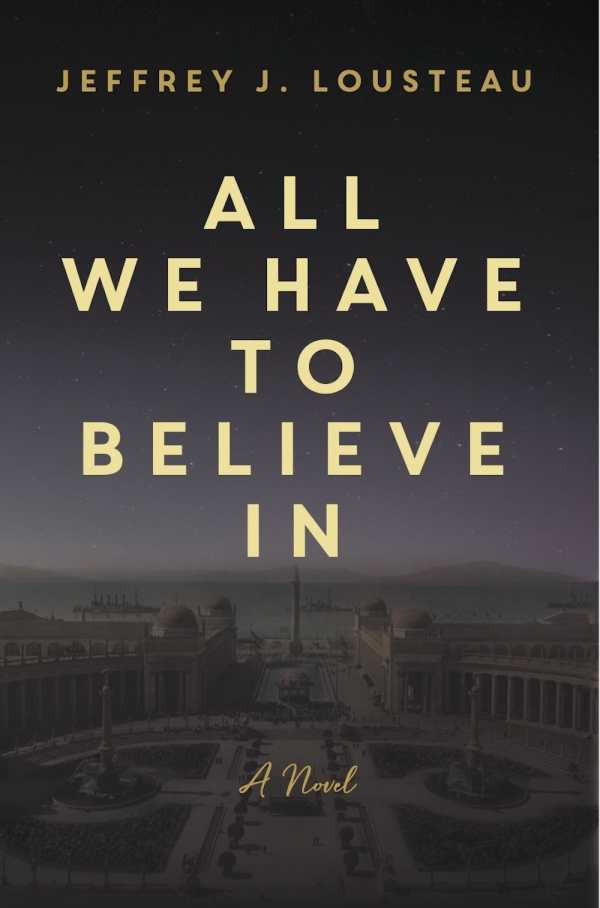All We Have to Believe In
All We Have to Believe In is a sprawling historical novel that’s concerned with individual accountability, collective responsibility, and empathy.
Set in the period between the World Wars I and II, Jeffrey J. Lousteau’s historical novel All We Have to Believe In contrasts optimistic social and family expectations with the lasting trauma of World War I.
About human complicity in the pain and suffering of others, the story begins when Edward returns to San Francisco from Europe, having witnessed battleground atrocities “so appalling that the very notion of God was impossible to fathom.” He struggles to resume his life with his family, his sweetheart, and his community, but to do so, he battles internal fear, guilt, and shame. He becomes a salesman for American Thread––and a witness to postwar struggles between labor rights activists and proponents of unbridled capitalism. His is revealed to be an era that’s dominated by conflicts over immigration, isolationism, and public health crises.
While the novel contains gory action scenes in which Edward’s life is at stake, its main conflicts are internal. The extent of one’s complicity in suffering is one of its central questions. It builds its considerable emotional suspense starting with its opening paragraph, when Edward wonders, “what had any of them done to deserve it?” From then on, its active narration leans into realistic and intense exchanges—used to reveal facets of the cast’s lives. Edward’s generous, no-nonsense wife is fleshed out this way, as are a fellow veteran with physical and emotional wounds, and a high school buddy who keeps his true nature a secret.
But the book’s summaries of the backstories of its secondary characters, some of whom play only minor roles, result in narrative drags. Important dramatic events are also condensed, diluting their power. Edward’s story of how his family survived the 1906 San Francisco earthquake and fires, for example, is shared in an awkward manner. In contrast, details from Edward’s clashes with union organizers, his discussions on workers’ rights, and his tragic night out with a high school friend are powerful and immediate.
Thematic connections are made between the Great Fire, the Great War, and the 1918 flu epidemic, all of which left deep scars on Edward’s community. And after an upbeat mayoral speech about rebuilt San Francisco, Edward feels “a great trauma was being swept under the rug, the truth obscured and history rewritten.” It’s a moment that resonates; the dangers of failing to acknowledge trauma on personal, family, and community levels are represented in potent ways. In the end, Edward’s internal struggles come to seem like a microcosm of the nation’s struggle to integrate and honor the pain brought about by war––and by exploitation of workers.
All We Have to Believe In is a sprawling historical novel that’s concerned with individual accountability, collective responsibility, and the difficulty of understanding someone else’s pain when you’re mired in your own.
Reviewed by
Michele Sharpe
Disclosure: This article is not an endorsement, but a review. The publisher of this book provided free copies of the book and paid a small fee to have their book reviewed by a professional reviewer. Foreword Reviews and Clarion Reviews make no guarantee that the publisher will receive a positive review. Foreword Magazine, Inc. is disclosing this in accordance with the Federal Trade Commission’s 16 CFR, Part 255.

